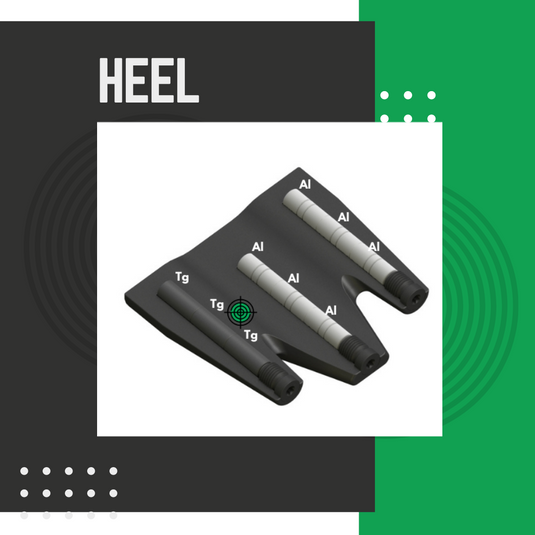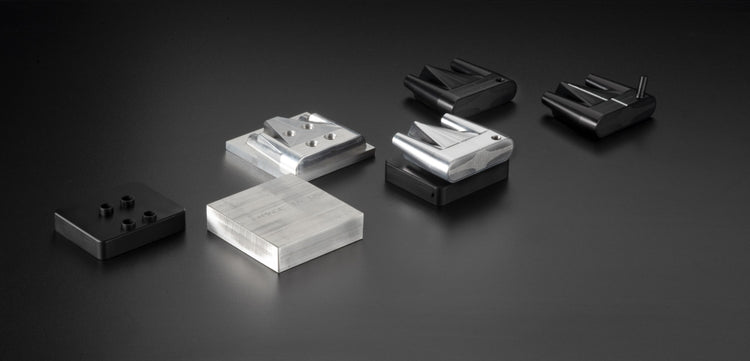“You can take the torque out of the putter, but not out of the player”
Makefield Putters’ X3 Weight System uses Aluminum, Stainless Steel, and Tungsten to create the largest array of customizable weighting options to compliment every player’s unique “torque-to-path” relationship. Torque is created in numerous ways during a putting stroke, however every player has their own unique torque profile.
Adjusting the weighting system of the putter head allows for what Makefield calls “Player Torque Matching”. Makefield’s X-3 Weight System allows for complete customization of the putter, based on “Player Torque Matching” profile. Proper putter fitting is important. Customized “Torque Matching” is ESSENTIAL. Makefield is leading the industry in offering its custom torque matching technology in all its putter products .

Makefield Putters’ X3 Weight System uses Aluminum, Stainless Steel, and Tungsten to create endless customizable options to accommodate all types of golfers’ needs. We created the X3 Weight System for different kinds of strokes, skill levels, and green speeds to create maximum adjustability and performance for all golfers.
Standard - Recommended for most Golfers
We recommend every golfer start with Tungsten and Aluminum weights in the Standard setting for the best tempo and optimal Path of Inertia effects. The two outside channels control the clubface, and the middle channel moves the CoG back. This setting allows consistency in both distance and direction, giving the golfer the feel of a mallet putter but the control from a blade putter.


Heel Weighted Biased - Recommended for Golfers that miss to the right
We recommend the Heel Weighted Bias for golfers who miss to the right. This setting will still give Path of Inertia and Tempo, and it will move the CoG closer to the heel, which will lead to the clubface returning to square faster.
Face Weighted Biased - Recommended for Golfers looking for directional control
We recommend the Face Weighted Bias for golfers looking for the feel of a blade putter. This setting will still give Path of Inertia and Tempo, and it will move your CoG closer to the clubface.


Toe Weighted Biased - Recommended for Golfers that miss to the left
We recommend the Toe Weighted Bias for golfers who miss to the left. This setting will still give Path of Inertia and Tempo, and it will move the CoG closer to the toe, leading to the clubface returning to square faster.
Back Weighted Biased - Recommended for Golfers looking for distance control
We recommend the Back Weighted Bias for golfers looking for the feel of a traditional mallet putter. This setting will still give you Path of Inertia and Tempo, and it will move your CoG closer to the back of the putter.


-
Creating Improved Ball Roll
Aircraft grade alloy construction, 100% CNC milled in the USA with state-of-the-art manufacturing processes.
Aircraft grade alloy construction, 100% CNC milled in the USA with state-of-the-art manufacturing processes.
What sets Makefield Putters apart from major golf club manufacturers is our use of high-quality materials and state-of-the-art manufacturing processes. Most putters are made with multiple pieces of cast materials. Although fast and cheap, this type of construction causes vibration in the putter head, resulting in long skid distance and limited distance and directional control.
Makefield Putters start as a solid piece of Aircraft Grade Alloy that is then CNC milled and assembled using custom-built robotics. Our in-house artisans anodize and laser engrave each Makefield Putter to our customer’s specifications.


Radial Cusp Face Technology (RCFT)
The putter’s face pattern is optimized to contact the ball with minimal friction through Radial Cusp Face Technology (RCFT). Through precise CNC milling of the face, individual intersectional nexuses are created with a near point-like structure. Because of the cusps’ radial profile, the force of the ball that impacts the face evenly distributes into the putter body while not “sticking” to the ball through traditional V or straight grooves.

